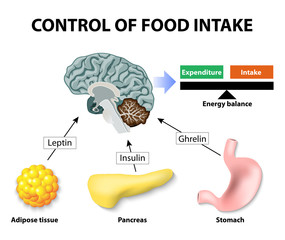Assessment of energy expenditure:
Energy expenditure can be measured through different methods and some of then are described below:
>
Factorial method:
Individual component of total energy expenditure (TEF) are measured separately and subsequently summed to calculate total energy requirements of individuals. Following are the components of TEF
Basal metabolic rate(BMR)
Thermic effect of food
Physical activity
TEE is the energy expenditure of human body during steady state of health. It is the sum of BMR , energy expenditure attributed to physical activity and TEF. It can be represented following formula;
TEF=BMR60.70%+Physical activity 20.30%+Thermic effect of food 10%
BMR is the minimal calories required to maintain basic physiological function of the body (breathing, thermoregulation, heart beating etc.) when a complete rest. It is typically measure during deep sleep at night or early morning hours.
Muscle mass of men in more as compared to women, thus have higher BMR. Similarly, muscle mass in older adults tends to decline, the BMR also decrease. BMR is influenced by age, gender, body composition, body size , growth period, climate and body temperature.
Resting metabolic rate (BMR) on the other hand is the rate of energy expenditure when at rest. It is generally measured after 8-12 hour of fast followed by 30 minute of rest. Moreover, it is relatively easier and less stringent in measure.
It may overestimate the energy requirement, by approximately 3-10% when compared to BMR. The temperature environment ( 68-82F vs 82-86F).
TEF slightly temperature increase between 2-5% . Under most circumstance, body temperature can be regulated by clothing etc. However, the inherent mechanism in mammals aimed to regulate body temperature within narrow limits is called as thermoregulation.
Through people can adapt to the ambient temperature variations have slight contribution towards total energy expenditure.
In cold stress environment , RMR may increase up to 2.5 fold due to shivering mechanism.
General formula for calculating RMR:
For men:
(1kcal )multiply by ( kg body weight) multiply by ( 24 hours )
For women:
(0.9 kcal) multiply by ( kg body weight ) multiply by ( 24 hours )
b. Physical activity level/
According to WHO definition physical activity is any bodily movement produced by skeletal muscles that require energy expenditure-including activities undertaken while working, playing, carrying out household chores, travelling and engaging in recreational pursuits.
The estimated total energy requirement of a person can be calculated by multiplying BMR with appropriate factor corresponding to the activity undertaken known as physical activity level PAL.
Energy expenditure= BMR multiply by PAL
Total physical activity is the sum of household chores, leisure time activity, care giving, travelling, sports and occupational activity.
Physical activity level in both gender
| ate | Women | Men |
|---|---|---|
| Very low level: physical activity during work or leisure time | 1.4 | 1.4 |
| Moderately itense | 1.6 | 1.7 |
Calories burnt in 30 minutes of physical activity
| Physical activity | Kcal burnt in minutes | Physical activity | Kcal burnt in minutes |
|---|---|---|---|
| Ironing | 69 | Lawn walking(using power mover) | 165 |
| Dusting and cleaning | 75 | Riding bicycle | 180 |
| Walking | 99 | Aerobic | 195 |
| Vacuum cleaning | 105 | Swimming(slow crawl) | 195 |
| Playing golf | 129 | Playing tennis(singles) | 240 |
| Playing tennis(double) | 150 | Running (@1o minutes/mile) | 300 |
| Brisk walking | 150 | Running (@8.5 minutes/mile) | 345 |
Physical activity recommendations:
According to WHO guidelines adults aging 18-64 should do minimum 150 min of moderately intense exercise during the week for health living. Moreover, muscle-strengthening activities are recommended on 2 or more days of a week. Moderately intense exercise is the level of activity .
Thermic effect of food TEF:
TEF is also termed as dietary-induced thermogenesis. It is defined as the energy used for digestion, absorption, transport, metabolize and disposal of ingested nutrient from food.
Thermic effect of macronutrients
| Nutrient | Thermic effect(%of totle kcal) |
|---|---|
| Carbohydrate | 5-10 |
| Protein | 20-30 |
| Fat | 0-5 |
| Mixed diet 10 |








0 Comments
please do not enter spam link in the comment box.